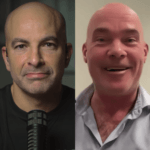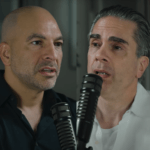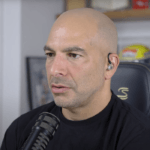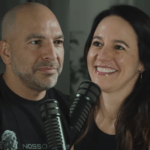In this episode of The Drive, Peter welcomes guests David Sabatini and Matt Kaeberlein, two world-leading experts on rapamycin and mTOR. David and Matt begin by telling the fascinating story of the discovery of rapamycin and its brief history as a pharmacological agent in humans. They then unravel the function of mTOR, a central regulator of numerous biological processes, and they discuss the pathways through which rapamycin exerts its potential benefits on lifespan. They touch upon initial studies that suggested rapamycin may have geroprotective effects and the ongoing research that continues to shed light on this unique molecule. Furthermore, they discuss the elusive details surrounding the frequency and dosing of rapamycin use in humans, and Peter emphasizes his reservations about indiscriminately prescribing rapamycin as a longevity drug for patients.
Subscribe on: APPLE PODCASTS | RSS | GOOGLE | OVERCAST | STITCHER
We discuss:
- David and Matt’s expertise in mTOR and rapamycin [3:00];
- The discovery of rapamycin and its first use in humans as an immunosuppressant [13:15];
- The emergence of rapamycin as a molecule with the potential to prolong lifespan [19:30];
- The groundbreaking rapamycin study on mouse lifespan extension and the open questions about the timing and frequency of dosing [26:00];
- Explaining mTOR and the biology behind rapamycin’s effects [35:30];
- Differences in how rapamycin inhibits mTOR complex 1 (MTORC1) versus mTOR complex 2 (MTORC2) [45:15];
- Reconciling the biochemical mechanism of rapamycin with its longevity benefit [49:15];
- Important discoveries about the interplay of amino acids (leucine in particular) and mTOR [54:15];
- Reconciling rapamycin-mediated mTOR inhibition with mTOR’s significance in building and maintaining muscle [1:01:30];
- Unanswered questions around the tissue specificity of rapamycin [1:08:30];
- What we know about rapamycin’s ability to cross the blood-brain barrier and its potential impacts on brain health and neurodegeneration [1:13:45];
- Rapamycin may act as an immune modulator in addition to immunosuppressive effects [1:21:30];
- Might rapamycin induce changes in T cell methylation patterns, potentially reversing biological aging? [1:34:15];
- Side effects of rapamycin and impact on mental health: fascinating results of Matt’s survey of people who use rapamycin off-label [1:42:00];
- The impact of taking rapamycin in people who contracted COVID-19: more insights from Matt’s survey [1:51:15];
- What David would like to study with mTOR inhibitors [1:54:45];
- Joan Mannick’s studies of RTB101 and other ATP-competitive inhibitors of mTOR [2:00:30];
- The impact of mTOR inhibition on autophagy and inflammation, and a discussion of biomarkers [2:10:00];
- The Dog Aging Project: what we’ve learned and what’s to come from testing rapamycin in companion dogs [2:17:30];
- Preliminary results of primate studies with rapamycin [2:24:45];
- Dosing of rapamycin [2:27:45];
- The effect of rapamycin on fertility [2:36:45];
- The outlook for future research of rapamycin and the development of rapalogs [2:39:00]; and
- More.
David and Matt’s expertise in mTOR and rapamycin [3:00]
- We’re going to try something a little different in this podcast: A three-way discussion
- Matt has been on the podcast a number of times (episode #222, #175, and #10), and David has also been on the podcast (episode #9)
- This topic is going to be new to many people, though they will have heard about it a lot
- They may have read a chapter about it in Peter’s book, which both Matt and David graciously helped fact check
- We’re going to pretend that someone coming into this discussion doesn’t really know anything about rapamycin, doesn’t really know what mTOR is
- Peter hopes that by the end of this discussion, we will have provided people with arguably the most comprehensive, quasi concise explanation of all you need to know about these topics
- Peter begins by asking David and Matt to do something he doesn’t often ask guest to do, “Toot your own horns a little bit about what it is that allows me to say you are each among the two most knowledgeable people on this topic.”
David has worked with rapamycin his entire scientific career
- Going back 30+ years to his PhD and he’s still the leading authority on it
- When David was a student with Sol Snyder at Johns Hopkins he became fascinated with rapamycin and as he tried to figure out how it works that led to the purification of the protein we now call mTOR
- Michael Hall had identified a yeast version of this that Matt was one of the early workers on this called TORC1
- And since that time, we’ve done a lot of biochemistry try to figure out what this protein does
What we conclude in a big picture point of view is that mTOR is the protein that links the availability of nutrients in our environment to whether we’re in a catabolic or an anabolic state
- Anabolism is growth, and catabolism is the breakdown of material
- This function accounts for why mTOR has so many different roles
- If you think about our evolutionary history, there’s almost nothing in our physiology that shouldn’t be controlled by the availability of nutrients
- It’s such a central thing in our lives
- We tend to forget that now because we’re in a overeating stage
- Since that time, what we’ve done is figured out a lot of the pieces of this pathway, including what we call two protein complexes: mTORC1 and mTORC2
- The work that David is the most satisfied with is how it senses nutrients and the nutrient sensors themselves (which are the actual proteins that bind the small molecules) tell mTORC1 in particular that it detects nutrients
Matt has been on the podcast a number of times to talk about mTOR, rapamycin, protein, and nutrition
- Matt started working on mTOR in yeast by accident
- He was really interested in understanding the genetics that control longevity
- They did an unbiased search for new genes that would affect lifespan and happened to find mTOR
- After that discovery, Matt immediately went and looked up everything he could learn about mTOR and found out about the drug rapamycin that’s an inhibitor of mTOR
- Then they found that they could also increase lifespan with rapamycin (at this point, they were working in yeast)
- This drug appeared to affect the biological aging process, not only in yeast, but also across the animal kingdom
- We now know even in mammals like mice and potentially in larger mammals like dogs and people
With that knowledge, Matt got very interested in trying to understand what the mechanisms are for how rapamycin was affecting the biological aging process
- He’s studied this in yeast and worms and fruit flies and mice, a little bit in pet dogs (which we may talk about)
- Through all of that, the one thing that has kept him excited about rapamycin as a potential longevity therapeutic is that it always works
- Without question, it is the most robust and reproducible drug (at least from preclinical studies) that we know about today, for impacting not only longevity, but to the extent that we can measure various metrics of healthspan in complex animals
- Rapamycin also seems to positively impact pretty much every aspect of healthspan that we measure
- This is why he has continued to study it
- Probably what Matt is best known for is pushing forward a veterinary clinical trial of rapamycin to really start to answer the question of all the things we’ve learned about rapamycin in the context of aging and longevity in the laboratory, how much of that will translate into the real world?
- This trial of rapamycin is being carried out in pet dogs right now
- He’s got some preliminary data, but it’s too early to be able to say with any level of confidence that rapamycin is going to positively impact the aging process in dogs
- But we’ve already learned a lot about safety and maybe some hints about efficacy
- Full disclosure: A number of Peter’s patients are funders of a study that we will talk about more later
On the continuum of understanding rapamycin and mTOR
- David is closer to what we would call the “bench” side of things
- Matt is closer to the bedside
- People have heard this term “bench to bedside” (ie. translational research)
- We aren’t quite at the bedside of humans yet, but really more the bedside of more complex mammals
- David adds, “Matt has been very careful… he’s taken a very scientific approach… I pretty much put Matt in one of the most respected categories of aging researchers for that reason.”
- Peter agrees that the field owes a lot of its credibility to the way Matt has approached this with scientific rigor (as opposed to commercialization)
Matt and David’s research on mTOR and rapamycin
- Much of Matt’s research on mTOR and rapamycin has been what people would typically consider preclinical or basic research and different from David’s approach
- The approach that David has taken throughout his career is quite complimentary in many ways to the approach that Matt taken, in that David has really been the pioneer and the leader in understanding detailed mechanistic aspects of the whole mTOR signaling network
It’s useful for people to appreciate that this is an extremely complex network of biological interactions
- David’s lab has he leading role at fleshing out from a very detailed biochemical and mechanistic perspective, how that network is working
- This has laid the foundation for people like Matt and many others who have then taken that knowledge and tried to start to move it into more applied contexts and clinical applications
- Peter adds that the field owes a lot of its credibility to the way Matt has approached this with scientific rigor being the highest priority
- As opposed to commercialization
- He notes there are a lot of other molecules where there is some interesting science behind it, but it seems to have almost been corrupted by a commercialization route, and we may never know if these things work or don’t work
- They’re also very difficult to take seriously
- Everybody should be grateful for the way this field has gone
{end of show notes preview}






Conversation:
David Sabatini:
“Rapamycin be workin’, for real this shit is effective!!! You can even smoke it and it’s still legit mixed with weed. More effective than yerba mate”
Matt Keaberlin:
“Word? My shoulder was messed up, but a few doses of rapamycin and it’s all good. I’m fuckin’ invincible now!!!”
Peter Attia:
“That shit works, but ain’t nothing like training. Strength, stability, power, and mindset. If you’re physically on point but your mental ain’t right, why even bother?
Podcast’s over, we off to the zone 2 – we runnin’ to Colorado to link up with Inigo.”
— The above is said tongue in cheek.
Thank you, gentlemen, for researching what you research, sharing it, and doing so in such an accessible manner.
Good talk, I am just finishing up a year long clinical trial with rapamycin in October. It is supposed to be completed by December. It’s is called the PEARL trial.
https://classic.clinicaltrials.gov/ct2/show/NCT04488601
That was amazing, thanks so much.
Another excellent podcast! A Masterclass on on the current status of Rapamycin and longevity. As a surgical resident a few years before Peter, the transplant service showed a much different side of this drug.
I did not hear Peter answer the question he posed in the opening though-
“You’ll see from this discussion why Peter has reservations about just blindly putting people on rapamycin
And why Peter’s practice is not just a “rapamycin mill””
How does he decide who to prescribe it to?
Please consider this: Peter said that there could be a bunch of people on Rapamycin for 15-20 yrs left over by old transplants, where the originally strted rapamycin maintenence was never stopped despite of the new up to date post transplant regiments that don’t include rapamycin anymore.
Would that be a way to find all these people and do all kinds of studies on them? I would hate see all this potentially very interesting information going to get lost!